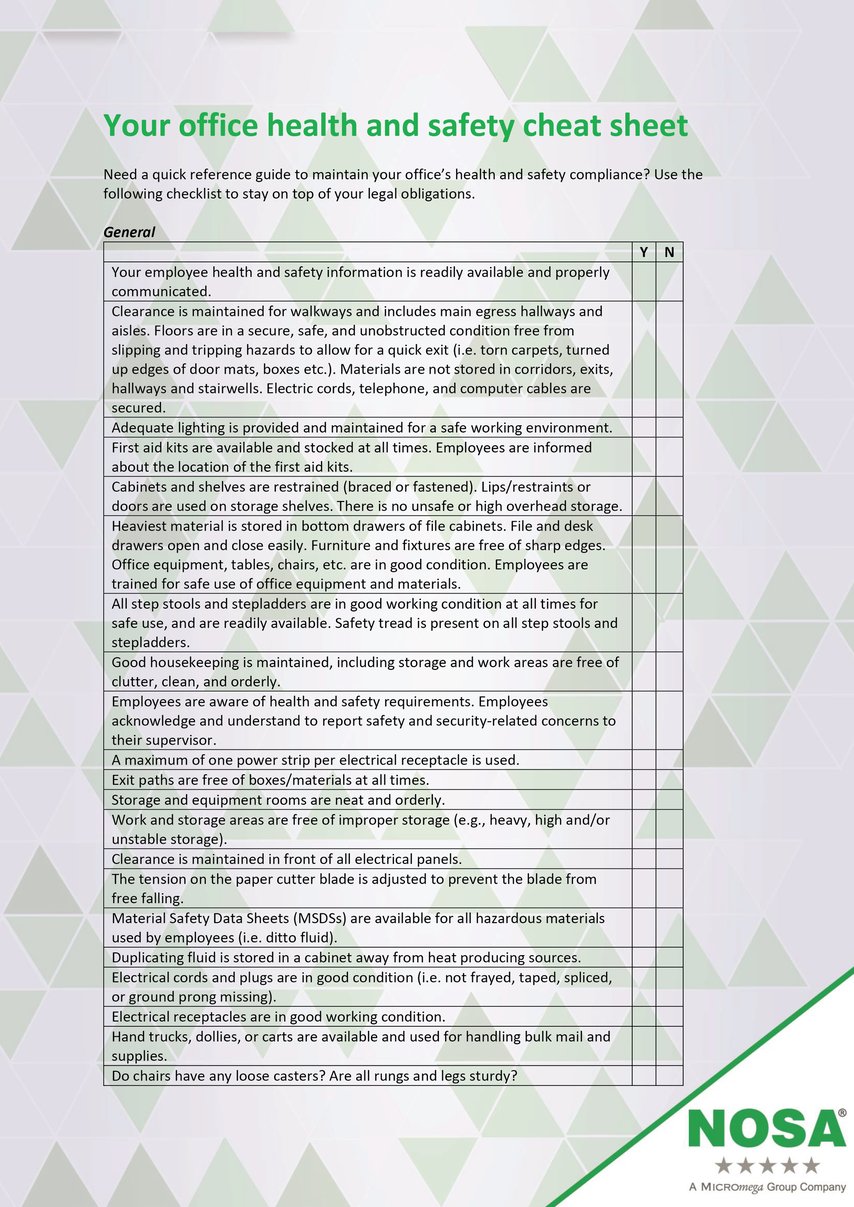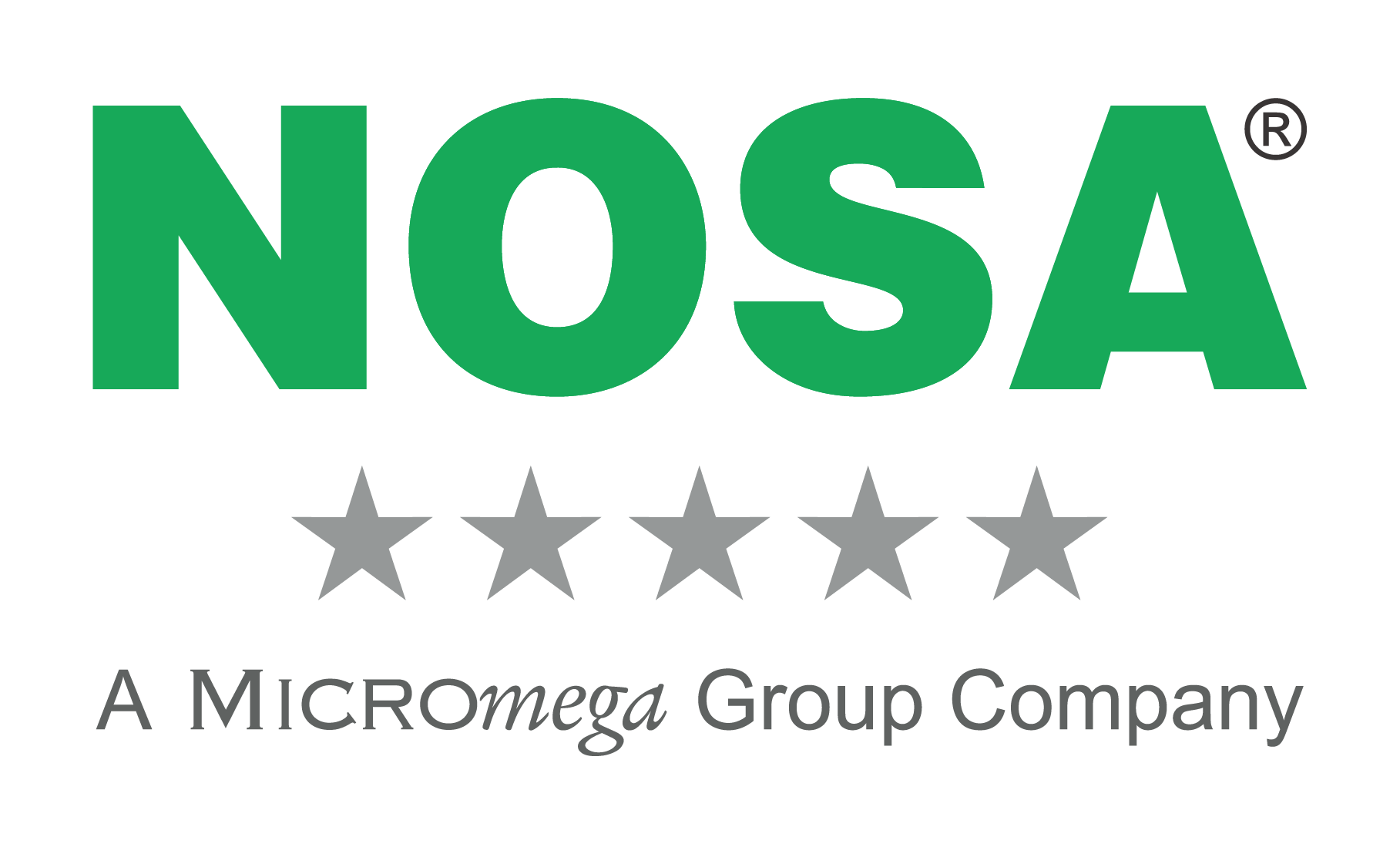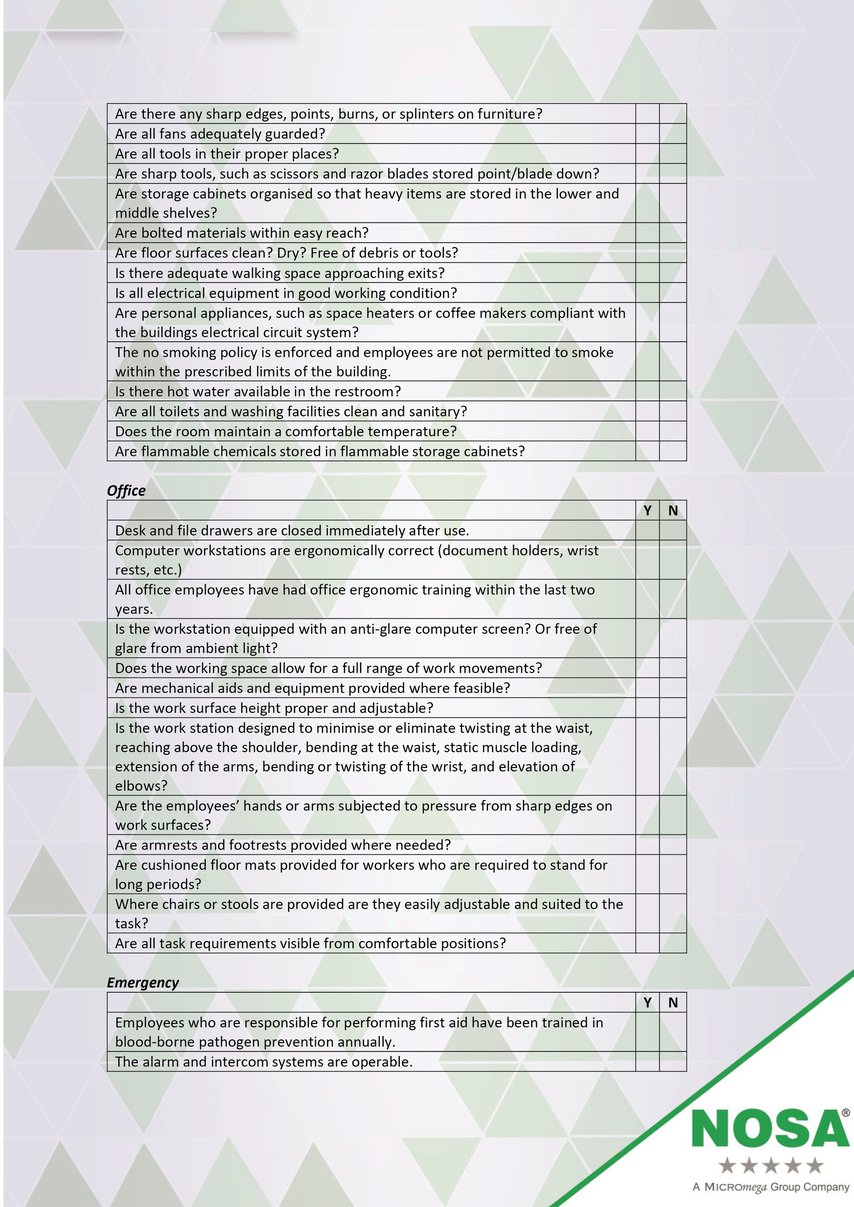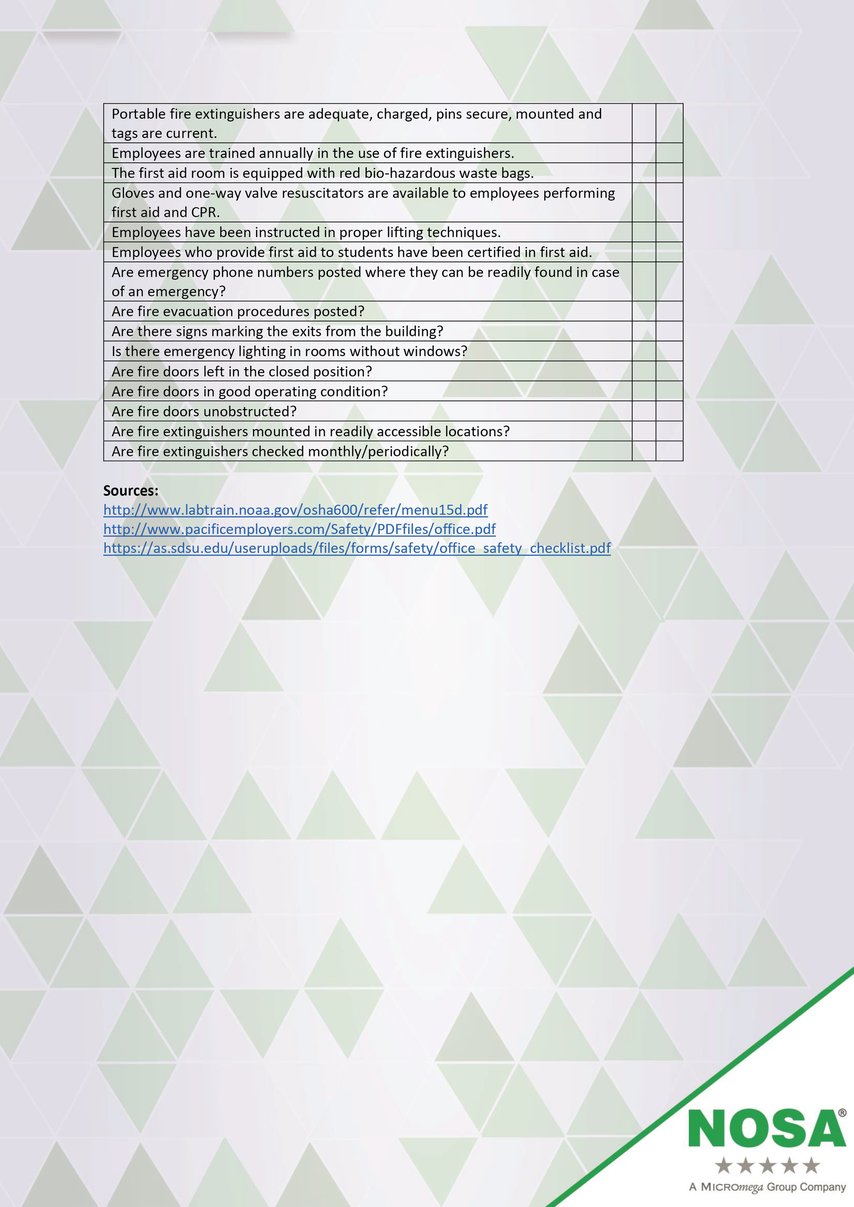Need a quick reference guide to maintain your office’s health and safety compliance? Use the following checklist to stay on top of your legal obligations.

General
|
|
Y |
N |
|
Your employee health and safety information is readily available and properly communicated. |
|
|
|
Clearance is maintained for walkways and includes main egress hallways and aisles. Floors are in a secure, safe, and unobstructed condition free from slipping and tripping hazards to allow for a quick exit (i.e. torn carpets, turned up edges of door mats, boxes etc.). Materials are not stored in corridors, exits, hallways and stairwells. Electric cords, telephone, and computer cables are secured. |
|
|
|
Adequate lighting is provided and maintained for a safe working environment.
|
|
|
|
First aid kits are available and stocked at all times. Employees are informed about the location of the first aid kits. |
|
|
|
Cabinets and shelves are restrained (braced or fastened). Lips/restraints or doors are used on storage shelves. There is no unsafe or high overhead storage. |
|
|
|
Heaviest material is stored in bottom drawers of file cabinets. File and desk drawers open and close easily. Furniture and fixtures are free of sharp edges. Office equipment, tables, chairs, etc. are in good condition. Employees are trained for safe use of office equipment and materials. |
|
|
|
All step stools and stepladders are in good working condition at all times for safe use, and are readily available. Safety tread is present on all step stools and stepladders. |
|
|
|
Good housekeeping is maintained, including storage and work areas are free of clutter, clean, and orderly. |
|
|
|
Employees are aware of health and safety requirements. Employees acknowledge and understand to report safety and security-related concerns to their supervisor. |
|
|
|
A maximum of one power strip per electrical receptacle is used. |
|
|
|
Exit paths are free of boxes/materials at all times. |
|
|
|
Storage and equipment rooms are neat and orderly. |
|
|
|
Work and storage areas are free of improper storage (e.g., heavy, high and/or unstable storage). |
|
|
|
Clearance is maintained in front of all electrical panels. |
|
|
|
The tension on the paper cutter blade is adjusted to prevent the blade from free falling. |
|
|
|
Material Safety Data Sheets (MSDSs) are available for all hazardous materials used by employees (i.e. ditto fluid). |
|
|
|
Duplicating fluid is stored in a cabinet away from heat producing sources. |
|
|
|
Electrical cords and plugs are in good condition (i.e. not frayed, taped, spliced, or ground prong missing). |
|
|
|
Electrical receptacles are in good working condition. |
|
|
|
Hand trucks, dollies, or carts are available and used for handling bulk mail and supplies. |
|
|
|
Do chairs have any loose casters? Are all rungs and legs sturdy? |
|
|
|
Are there any sharp edges, points, burns, or splinters on furniture? |
|
|
|
Are all fans adequately guarded? |
|
|
|
Are all tools in their proper places? |
|
|
|
Are sharp tools, such as scissors and razor blades stored point/blade down? |
|
|
|
Are storage cabinets organised so that heavy items are stored in the lower and middle shelves? |
|
|
|
Are bolted materials within easy reach? |
|
|
|
Are floor surfaces clean? Dry? Free of debris or tools? |
|
|
|
Is there adequate walking space approaching exits? |
|
|
|
Is all electrical equipment in good working condition? |
|
|
|
Are personal appliances, such as space heaters or coffee makers compliant with the buildings electrical circuit system? |
|
|
|
The no smoking policy is enforced and employees are not permitted to smoke within the prescribed limits of the building. |
|
|
|
Is there hot water available in the restroom? |
|
|
|
Are all toilets and washing facilities clean and sanitary? |
|
|
|
Does the room maintain a comfortable temperature? |
|
|
|
Are flammable chemicals stored in flammable storage cabinets? |
|
|
Office
|
|
Y |
N |
|
Desk and file drawers are closed immediately after use. |
|
|
|
Computer workstations are ergonomically correct (document holders, wrist rests, etc.) |
|
|
|
All office employees have had office ergonomic training within the last two years. |
|
|
|
Is the workstation equipped with an anti-glare computer screen? Or free of glare from ambient light? |
|
|
|
Does the working space allow for a full range of work movements? |
|
|
|
Are mechanical aids and equipment provided where feasible? |
|
|
|
Is the work surface height proper and adjustable? |
|
|
|
Is the work station designed to minimise or eliminate twisting at the waist, reaching above the shoulder, bending at the waist, static muscle loading, extension of the arms, bending or twisting of the wrist, and elevation of elbows? |
|
|
|
Are the employees’ hands or arms subjected to pressure from sharp edges on work surfaces? |
|
|
|
Are armrests and footrests provided where needed? |
|
|
|
Are cushioned floor mats provided for workers who are required to stand for long periods? |
|
|
|
Where chairs or stools are provided are they easily adjustable and suited to the task? |
|
|
|
Are all task requirements visible from comfortable positions? |
|
|
Emergency
|
|
Y |
N |
|
Employees who are responsible for performing first aid have been trained in blood-borne pathogen prevention annually. |
|
|
|
The alarm and intercom systems are operable. |
|
|
|
Portable fire extinguishers are adequate, charged, pins secure, mounted and tags are current. |
|
|
|
Employees are trained annually in the use of fire extinguishers. |
|
|
|
The first aid room is equipped with red bio-hazardous waste bags. |
|
|
|
Gloves and one-way valve resuscitators are available to employees performing first aid and CPR. |
|
|
|
Employees have been instructed in proper lifting techniques. |
|
|
|
Employees who provide first aid to students have been certified in first aid. |
|
|
|
Are emergency phone numbers posted where they can be readily found in case of an emergency? |
|
|
|
Are fire evacuation procedures posted? |
|
|
|
Are there signs marking the exits from the building? |
|
|
|
Is there emergency lighting in rooms without windows? |
|
|
|
Are fire doors left in the closed position? |
|
|
|
Are fire doors in good operating condition? |
|
|
|
Are fire doors unobstructed? |
|
|
|
Are fire extinguishers mounted in readily accessible locations? |
|
|
|
Are fire extinguishers checked monthly/periodically? |
|
|
We've made these checklists available for download as a high-res, printable PDF. Click on the button below and get your copy now.
Sources:







